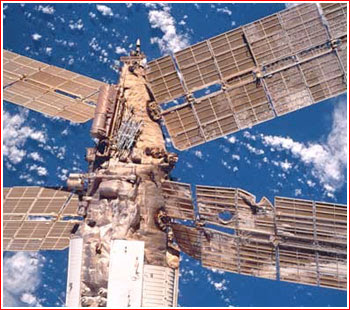Nothing gets me more nitpicky than errors in space reporting. People who write technical articles about space are supposed to simplify explanations so that the general public can understand matters of orbital mechanics and engineering, but it doesn't mean that the writers need to be inaccurate.
My latest twitchiness revolves around the COTS-2 Dragon spacecraft, due to meet up with the International Space Station on Friday. Dragon is a history maker, being the first commercial cargo ship to arrive with a billable payload for the ISS.
Where does the craziness erupt? It's when TV reporters describe the linking as "docking" the spacecraft to the station. It's not a docking. In fact, avoiding a docking situation is exactly why the Dragon is such an attractive ship to both NASA and the other space station partners. Dragon has been built specifically NOT to dock with the station.
Docking is when a ship under its own power connects with another ship. Think of a boat on the water as it pulls up to, well, a dock: the boat steers and alters its speed so that it can connect with the cleats on the pier deck. The Apollo Command and Lunar Modules docked in lunar orbit.
 |
| Docking |
Berthing is when something at sea is snatched out of the open water and placed in a slip, or on a deck. Imagine a cargo ship being unloaded in a harbor. The harbor crane is berthing the cargo containers by stacking them in piles on the shore.The cargo containers are not under their own power - - the crane is doing all the work. The Dragon spacecraft is berthed with the ISS.
 |
| Berthing |
This doesn't seem like it should be a big deal - - docking vs. berthing - - but in the history of space station operations, it's a best practice when the cargo can be berthed instead of docked.
Why? Because way back in 1997, a docking collision almost wiped out the Mir space station, and the six people on board. Progress ship M-34 had a stuck thruster and wound up ripping a gash in the starboard side of the Mir station, causing a sudden vacuum in the Spektr module and a series of lengthly repairs for the station. Although Russia still uses Progress ships to resupply the ISS, they use minimal thrusts to bring the spacecraft within the "danger zone" (the KOS or "Keep Out Sphere") of the station.
 |
| Progress SMASH! |
Newer ships are designed around a berthing model. First, the ship will arrive from the underside, or R-bar axis of the station. Why? Let's take a look at the R-bar and see:
The R-bar is a line that runs from the bottom of the station through the center of the planet Earth. Any ship arriving from this direction will fall back towards Earth as the thrust is reduced. So, it's a safe vector if you want to get close to the space station without bumping into it.
Dragon will climb up the R-bar line until it crosses inside the KOS. Astronauts on board the ISS will reach out with the Canadarm and tuck the ship into a port on the bottom of the Harmony module. The connector for the ship and the station is called, aptly enough, a Common Berthing Mechanism, or CBM. Dragon's port hinges will click into place with the ISS mechanism, and -boom- mission accomplished!
So, if you get up early Friday morning to watch all this orbital ballet, you'll be able to yell at the TV with a sense of authority as you correct the woefully misinformed news reader. Hooray for you!

No comments:
Post a Comment